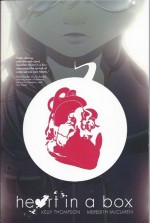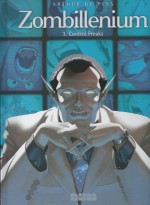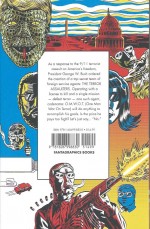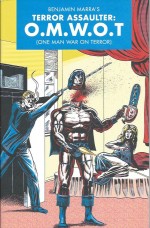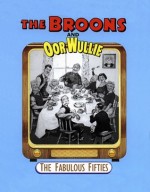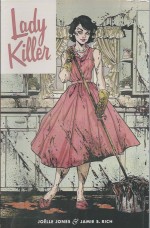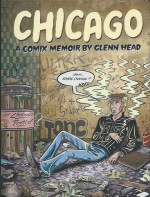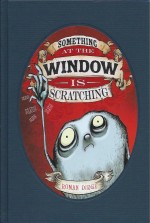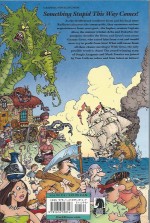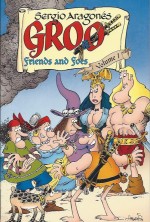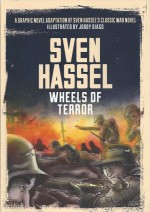
By Sven Hassel, illustrated by Jordy Diago (Weidenfeld & Nicolson)
ISBN: 978-1-60699-878-6
Although his true history remains controversial and hotly contested in his home country, Børge Willy Redsted Pedersen AKA Sven Hazel AKA Sven Hassel is indisputably one of the most influential authors of the late 20th century. The fourteen novels bearing his nom de guerre/plume, based on his war-time experiences as a decorated soldier in the German army (and latterly as a POW), have sold 53 million copies worldwide, published in more than 50 countries, and a fair few of those were to readers who went on to create many of the last forty-five years’ worth of great war comics.
He was born in 1917 and, after turbulent times in the post-war years following his return to his fatherland, left forever his native Denmark in 1964 for Barcelona. He stayed put and peacefully passed away in there in 2012. Now, with his canon once more lined up for screen adaptations, his stories have finally begun the transition to the genre he so particularly inspired: graphic novels.
Published in 1953, Legion of the Damned was a colossal hit, delineating his entire time in the Army of the Reich, including prompt desertion, recapture, confinement and sentencing to a Penal Battalion on the Eastern Front.
The remaining thirteen books are elaborations of that book and period, offering greater depth and many more unforgettable moments of horror and camaraderie, which is presumably why these adaptations – by son Michael and granddaughter Mireia, illustrated with subdued yet expressionistic verve by Spanish artist and photographer Jordy Diago (Fix und Foxi, El Cuervo, the Disney Company) – begin with the second novel.
Wheels of Terror was first released in 1958 and is regarded by many as the ultimate anti-war novel; each chapter a gut wrenching, thought-provoking, seemingly pointless exploit in a never-ending succession of brushes with near-death, human brutality and the appalling consequences of total war as experienced by the diffident narrator and his comrades. Those include charismatic thief Joseph Porta, hulking Tiny, former Foreign Legionnaire Alfred Kalb, elderly Troop Sergeant “The Old ‘Unâ€, somehow still-religious Möller, aging Bauer, big, steadfast Pluto and the rest…
This oversized (296 x 208 mm) full-colour paperback opens with no preamble or fanfare with ‘Nox Diaboli’ as the old lags are driven into Hamburg during an Allied firebombing raid and used as a clean-up crew during the still on-going devastation. The worst part was probably the children’s home…
‘Furioso’ then pauses to introduce the cast as they return to the Eastern Front, but still lumbered with shifting corpses, “aided†by Russian POWs with whom they have far more in common than any German officer. ‘A Shot in the Night’ then describes an uneventful night in the barracks at the Sennelager Training Grounds involving a near-fatal confrontation with a martinet Sergeant-Major who has no time for convicts and unconventional Commandant Colonel Von Weisshagen. As usual, Porta’s nervy, anarchic impromptu antics turn potential catastrophe into a war-story worth retelling many times over…
Penal battalions get all the choice jobs and ‘State Murder’ describes what happens when the squad are ordered to execute prisoners – even young women – after which ‘Porta as Pope’ finds the still-distraught men gathered to drink and play cards whilst the indefatigable fixer regales his chums with the time he accidentally became padre to the barbarous counterattacking “Ivans†before Sven sneaks away to enjoy an unlikely ‘Love Scene’ with a woman living in the bombed-out ruins…
The account kicks into grim high gear with ‘Return to the Eastern Front’ as the dirty business of trench-fighting resumes in earnest, punctuated with moments of inactivity spiced up by Porta’s ribald stories and songs, but soon the gregarious scene-stealer is risking his life with our narrator at a forward listening post mere metres from the Russians where he learns that ‘At 11.30 AM the Germans Will be Blown Sky High’.
The subsequent devastating clash between advancing Ivans and a doughty crew of German flamethrower operators is appalling to witness and the pointless action soon leads to ‘Close Combat in Tanks’ with the reprobates stuck inside a malfunctioning Tiger, narrowly avoiding being butchered by the advancing enemy before having to fight for their lives in freezing close quarters at apocalyptic atrocity-site ‘Cherkassy’…
A relative moment of calm only gives the squad time to brood and indulge in torture masquerading as interrogation before ‘The Sneaking Death’ sees another firefight erupt, killing a third of the company…
In the bright day of a forest reconnaissance, loquacious Porta describes his favourite meal of ‘Mashed Potatoes with Diced Pork’ to the ones who made it, leading to a shockingly bloodless and almost comic confrontation with a Russki patrol before ‘The Partisan’ sees the scruffy survivors trying to help a girl rescue her already-arrested father from execution. Nazi fanatic Julius Heide then learns to his cost that the scum hate him as much as he despises them…
When the quartermaster asks the starving troops in all seriousness ‘What Do You Want to Eat?’ following an upcoming attack, the wary warriors realise the hell they’re about to enter, resulting in the loss of yet another cast regular, after which a frenzied retreat in tanks is interrupted by more murderous Soviets and a crazy interlude wherein Kalb risks everything to help a Russian woman in the final stages of ‘Childbirth’…
This story doesn’t end; the reader just finds a place to stop watching and that occurs here with ‘Long Live Death’ as the ravaged survivors hide in a trench with Ivans inexorably advancing. The grim moments pass as the convict soldiers observe how proper German officers die before finding two Soviet women soldiers who would rather stay with them than be returned to their male Russian comrades. And then the shooting starts again and your narrator is hit. Fade to black…
Grim, bleak, blackly funny and still ferociously forceful, this pictorial interpretation is a splendid first outing from all involved, deftly negotiating the minefield of how to keep the necessarily horrendous visual aspect from overpowering the events. Purists who love the prose novels might, however, feel cheated that some of the more racy (by today’s standards that might as well read as sexually exploitative) content has been toned down or expurgated, but all in all this is a book to satisfy old fans and make a legion of new ones.
© MHAbooks aps 2015. All rights reserved.


